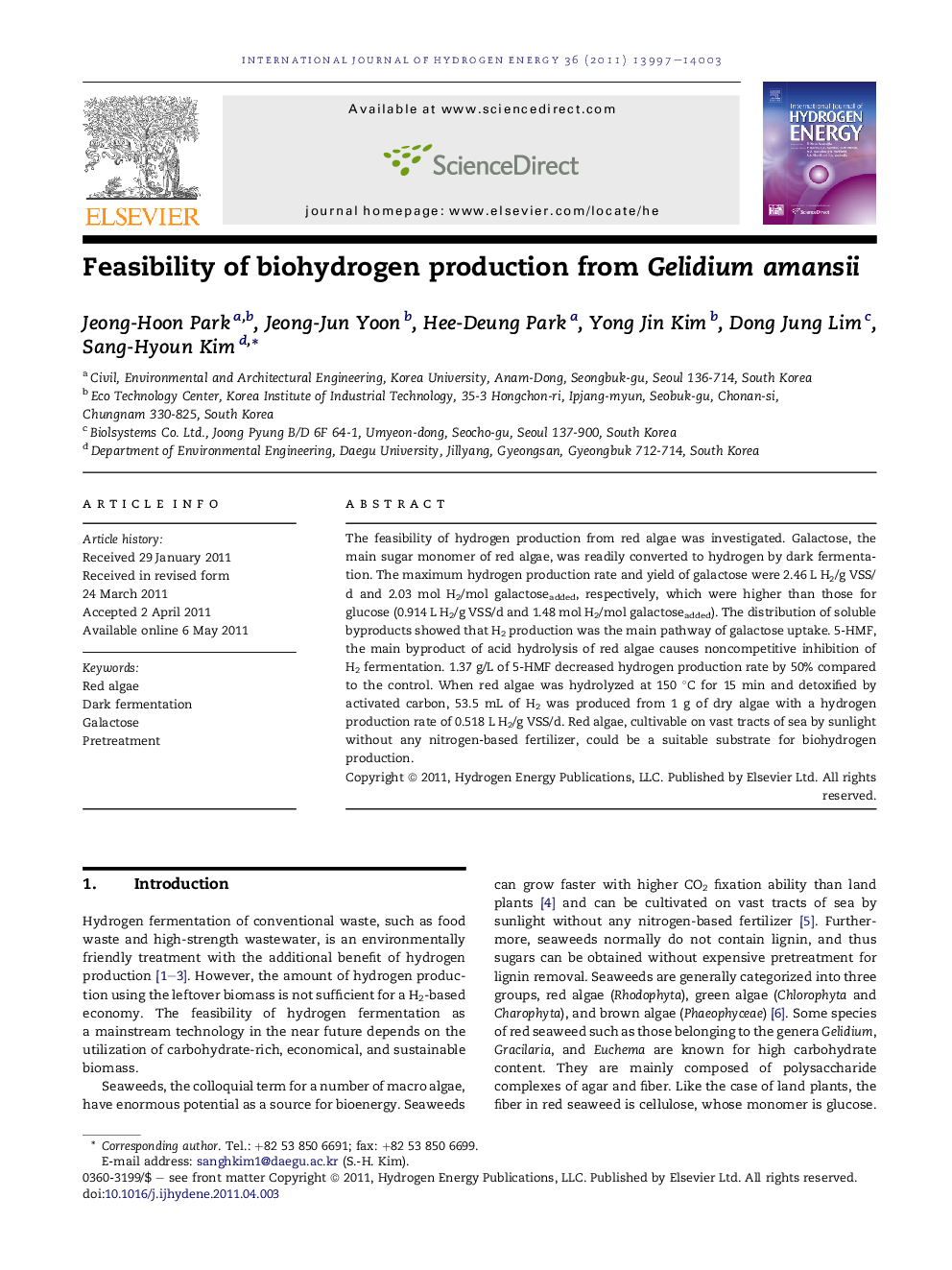| کد مقاله | کد نشریه | سال انتشار | مقاله انگلیسی | نسخه تمام متن |
|---|---|---|---|---|
| 1278754 | 1497572 | 2011 | 7 صفحه PDF | دانلود رایگان |

The feasibility of hydrogen production from red algae was investigated. Galactose, the main sugar monomer of red algae, was readily converted to hydrogen by dark fermentation. The maximum hydrogen production rate and yield of galactose were 2.46 L H2/g VSS/d and 2.03 mol H2/mol galactoseadded, respectively, which were higher than those for glucose (0.914 L H2/g VSS/d and 1.48 mol H2/mol galactoseadded). The distribution of soluble byproducts showed that H2 production was the main pathway of galactose uptake. 5-HMF, the main byproduct of acid hydrolysis of red algae causes noncompetitive inhibition of H2 fermentation. 1.37 g/L of 5-HMF decreased hydrogen production rate by 50% compared to the control. When red algae was hydrolyzed at 150 °C for 15 min and detoxified by activated carbon, 53.5 mL of H2 was produced from 1 g of dry algae with a hydrogen production rate of 0.518 L H2/g VSS/d. Red algae, cultivable on vast tracts of sea by sunlight without any nitrogen-based fertilizer, could be a suitable substrate for biohydrogen production.
► Red algae can be a suitable substrate for dark hydrogen fermentation.
► Galactose, the main monomer of red algae, is readily utilized for hydrogen production.
► The hydrogen production rate and yield of galactose are higher than those of glucose.
► When hydrolyzed and detoxified, 1 g of dry algae would be converted to 53.5 mL of hydrogen.
Journal: International Journal of Hydrogen Energy - Volume 36, Issue 21, October 2011, Pages 13997–14003